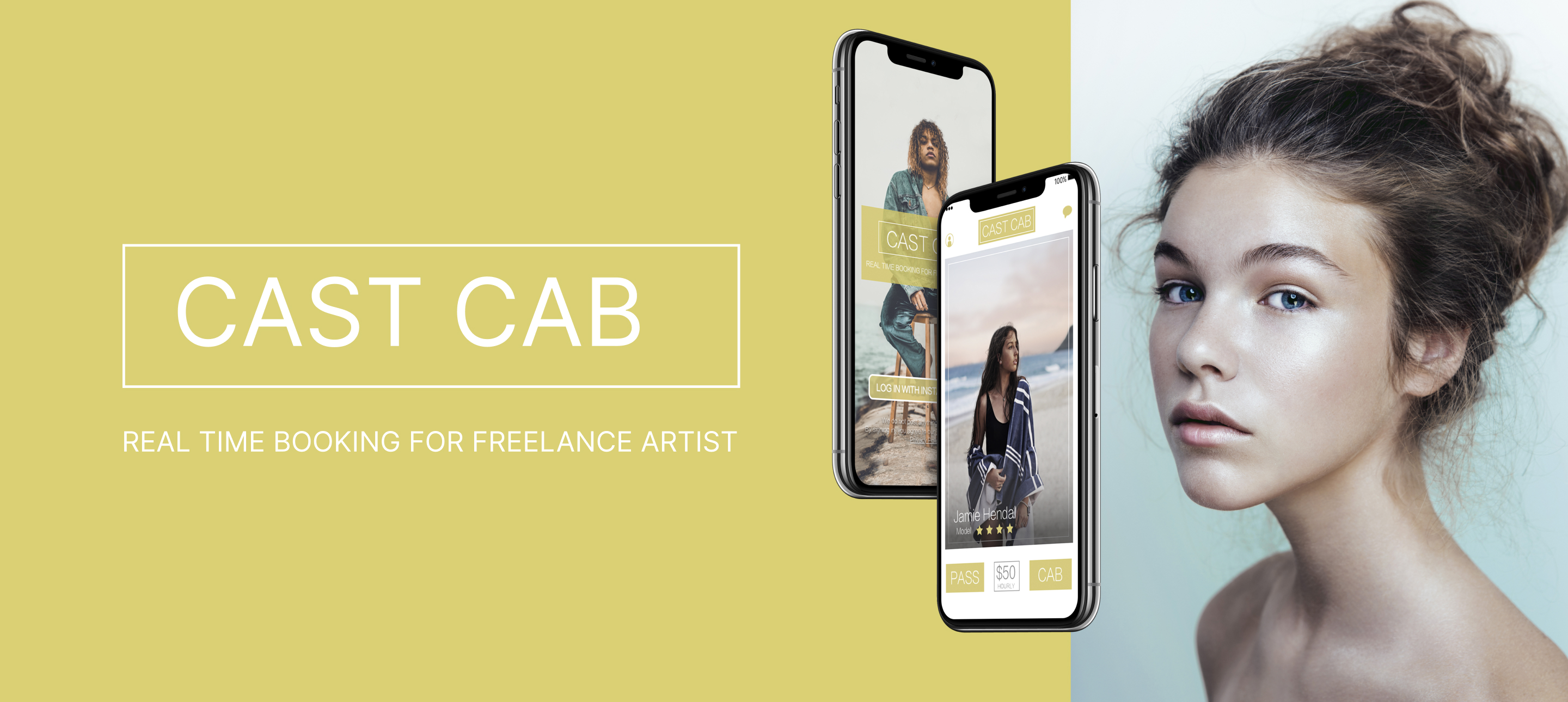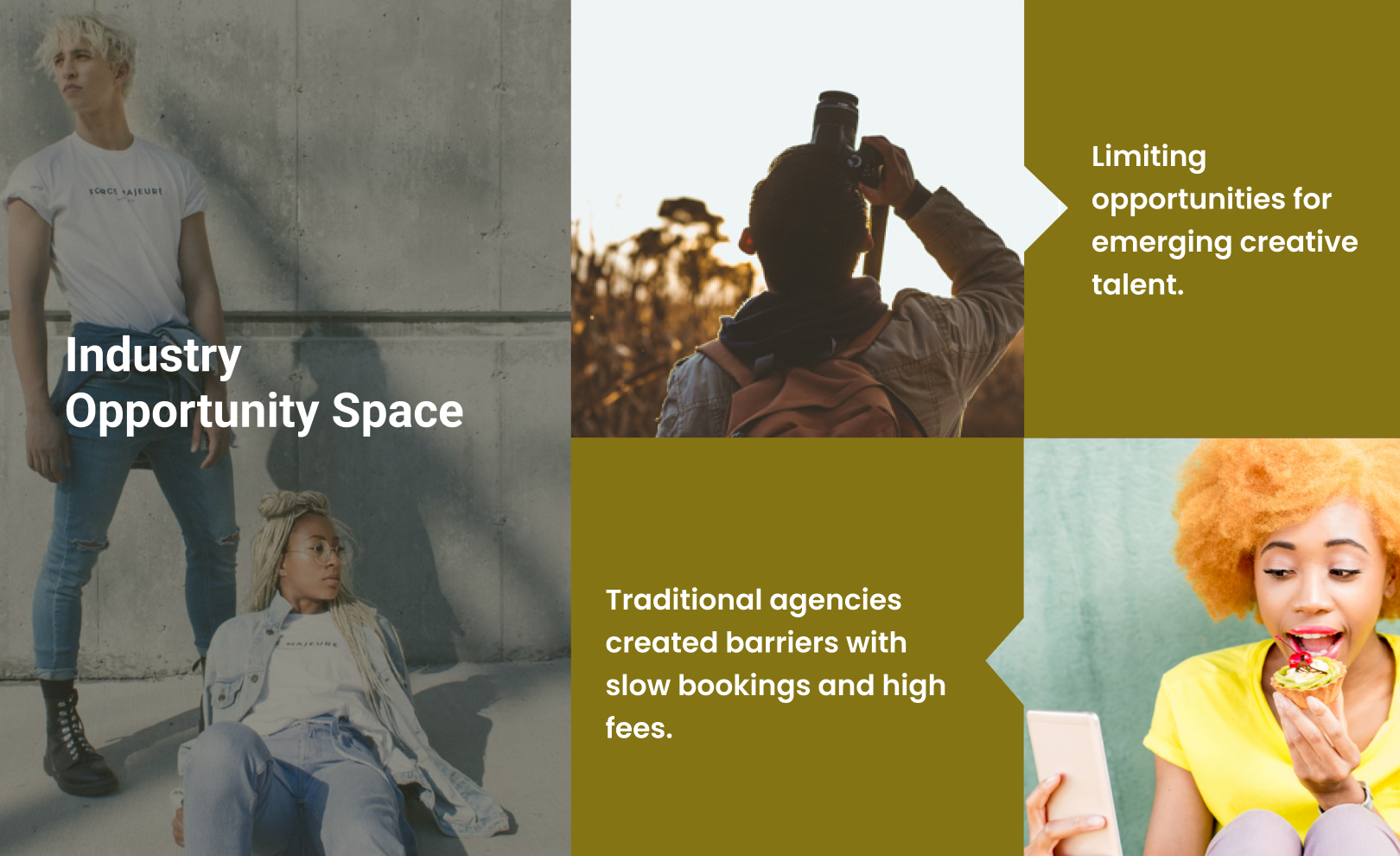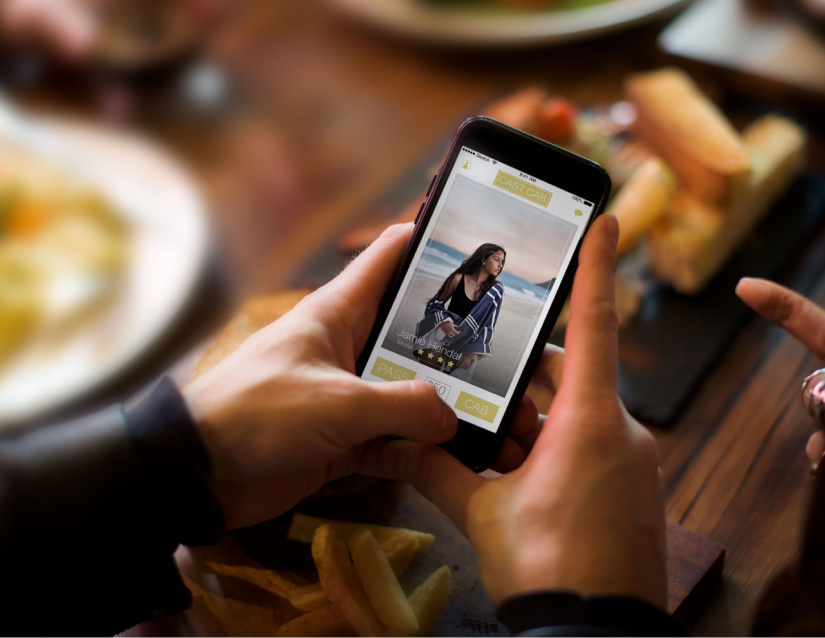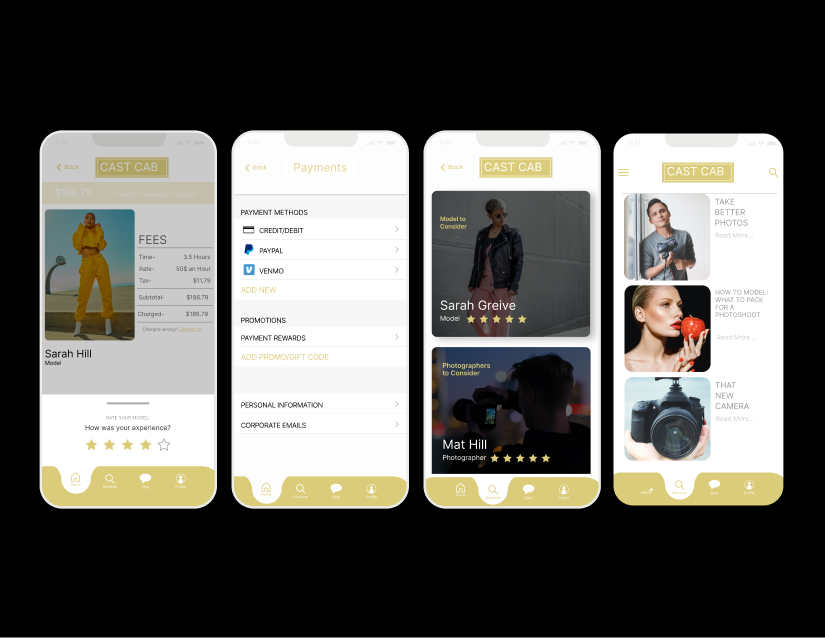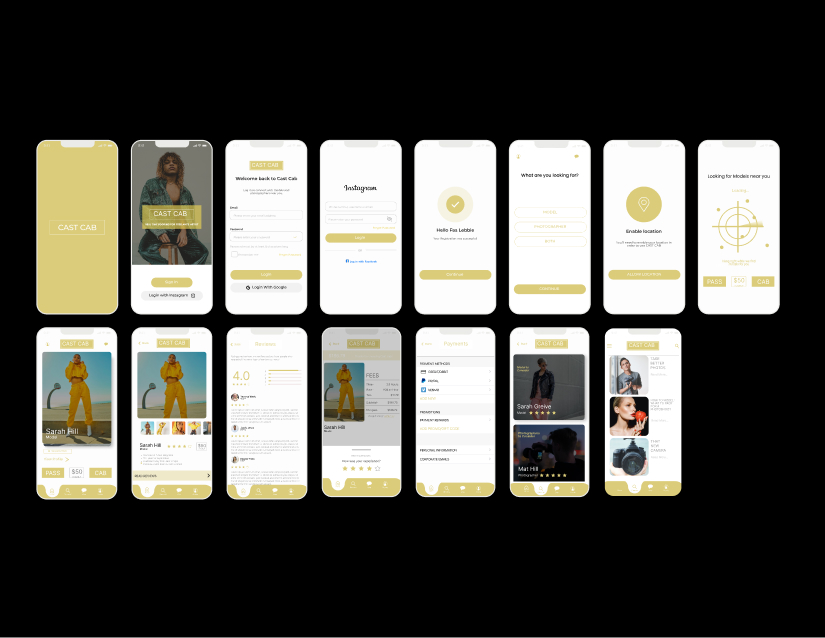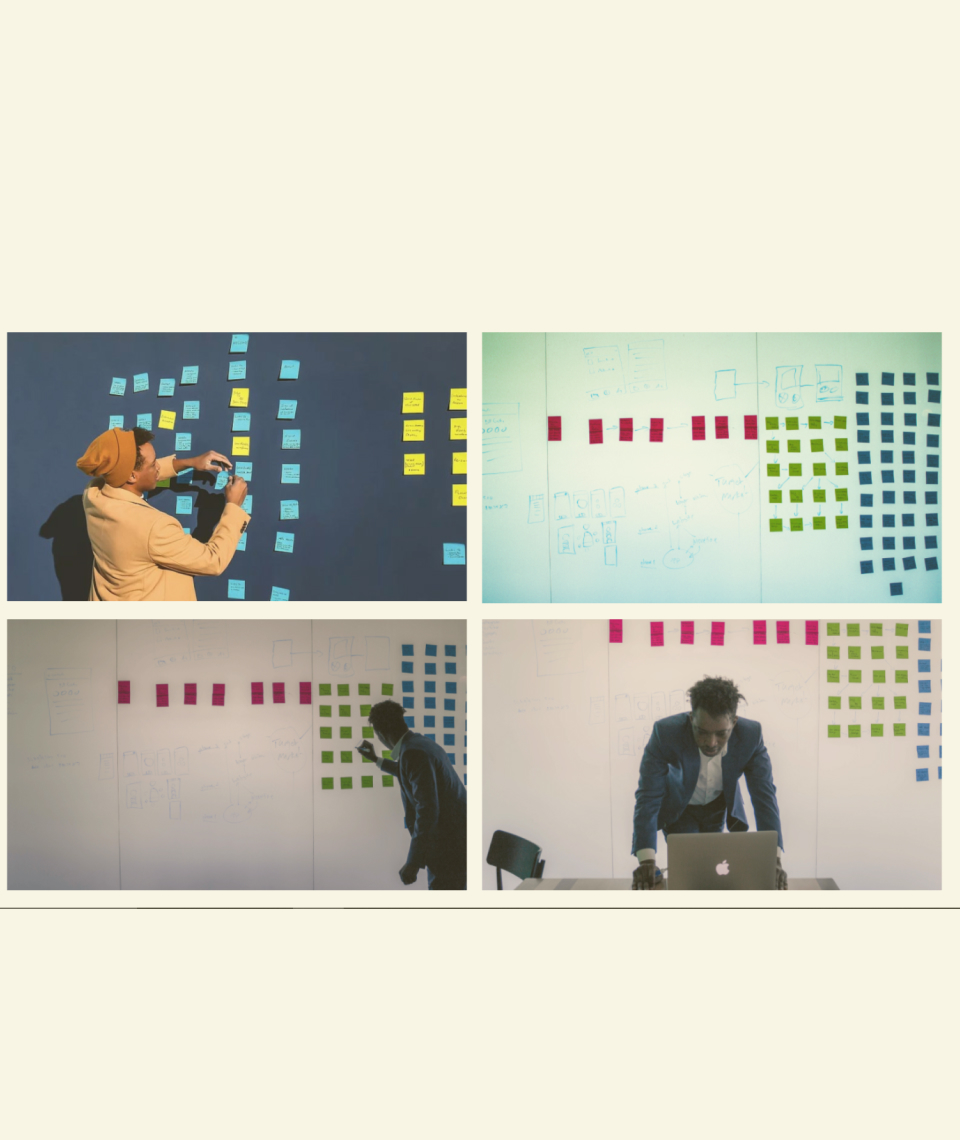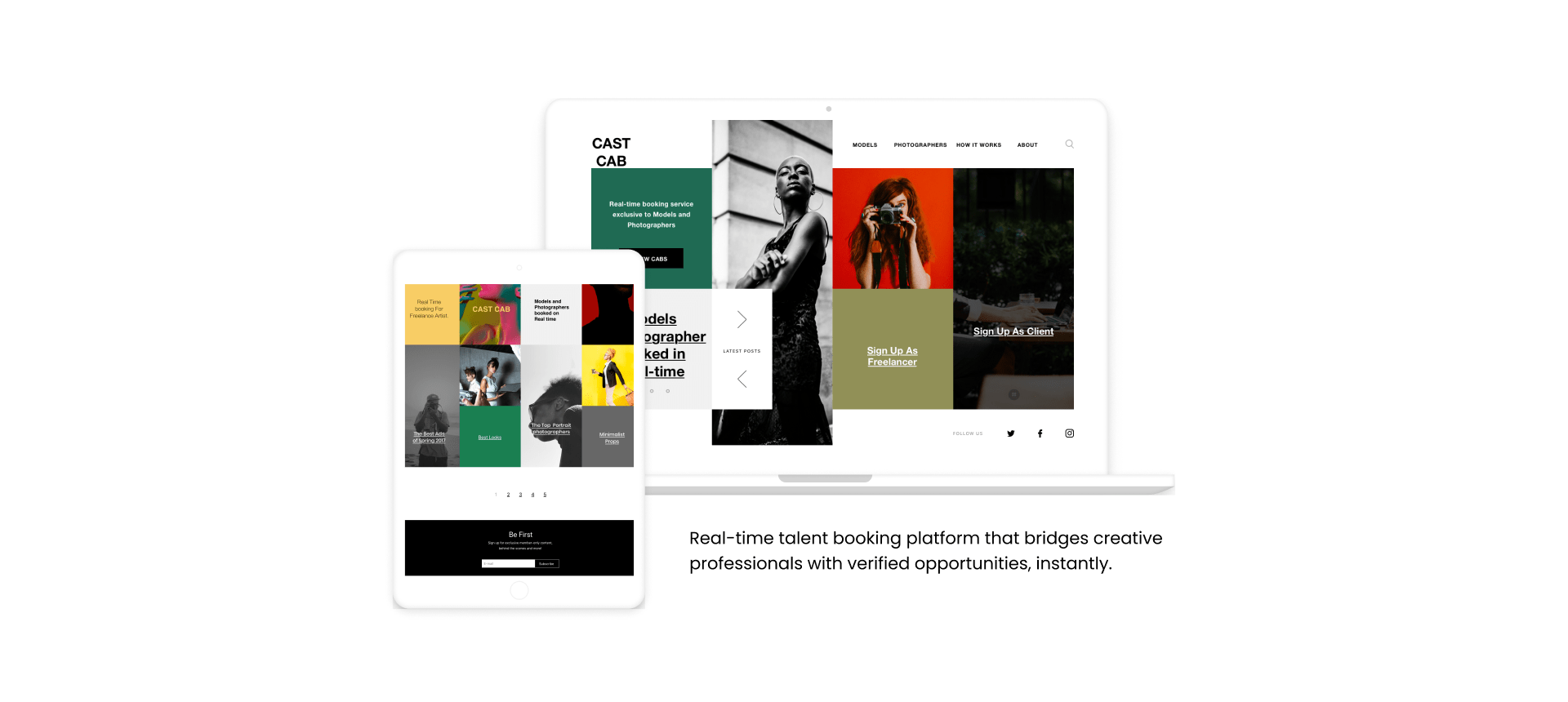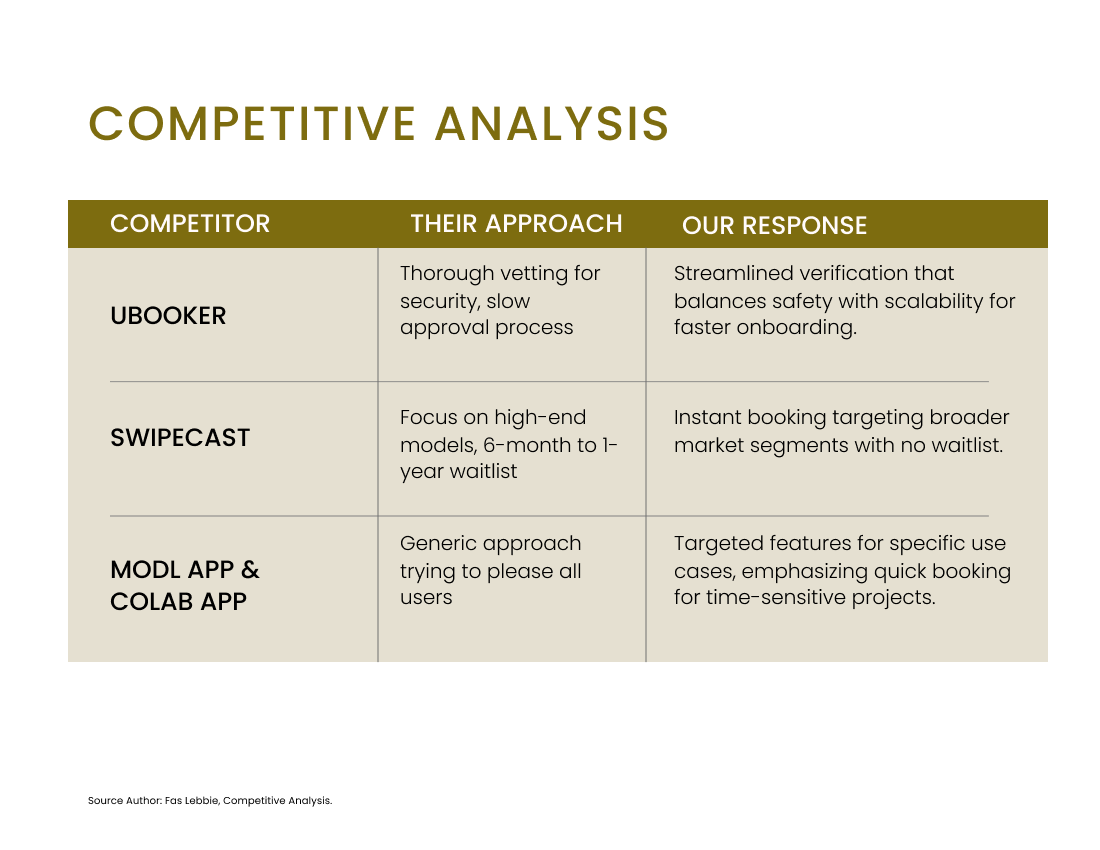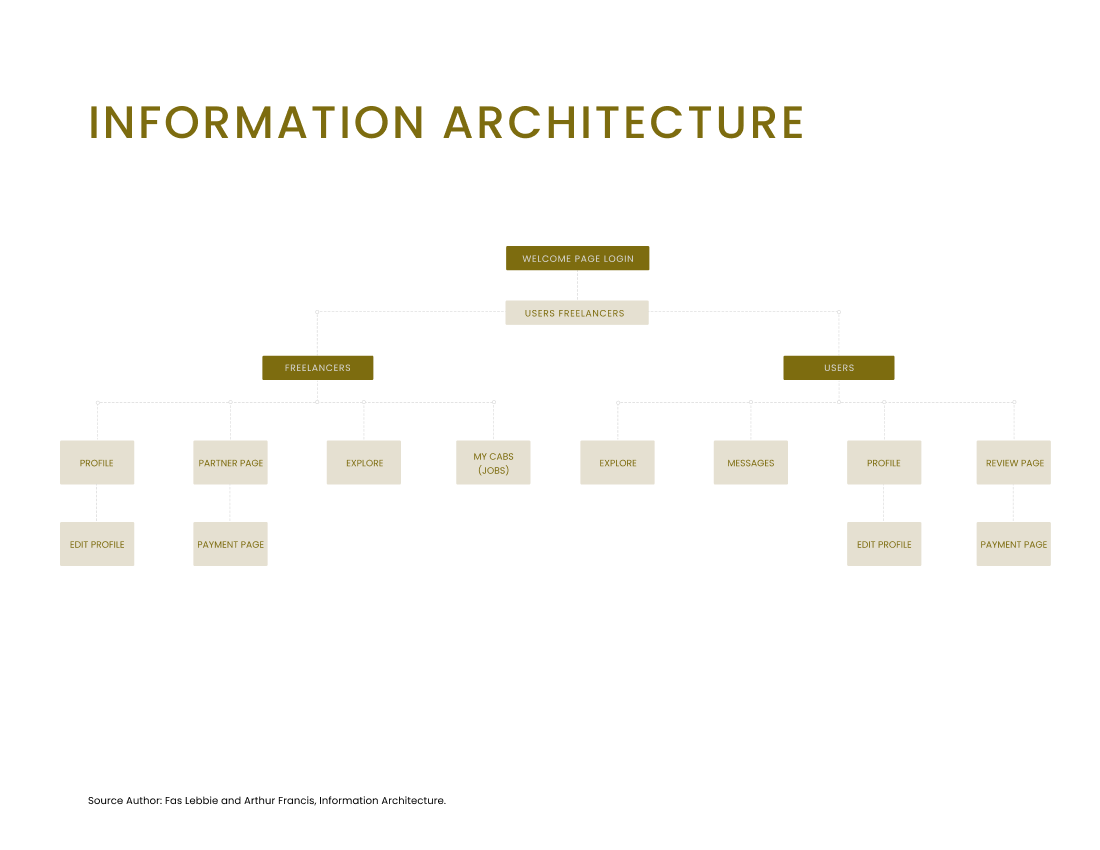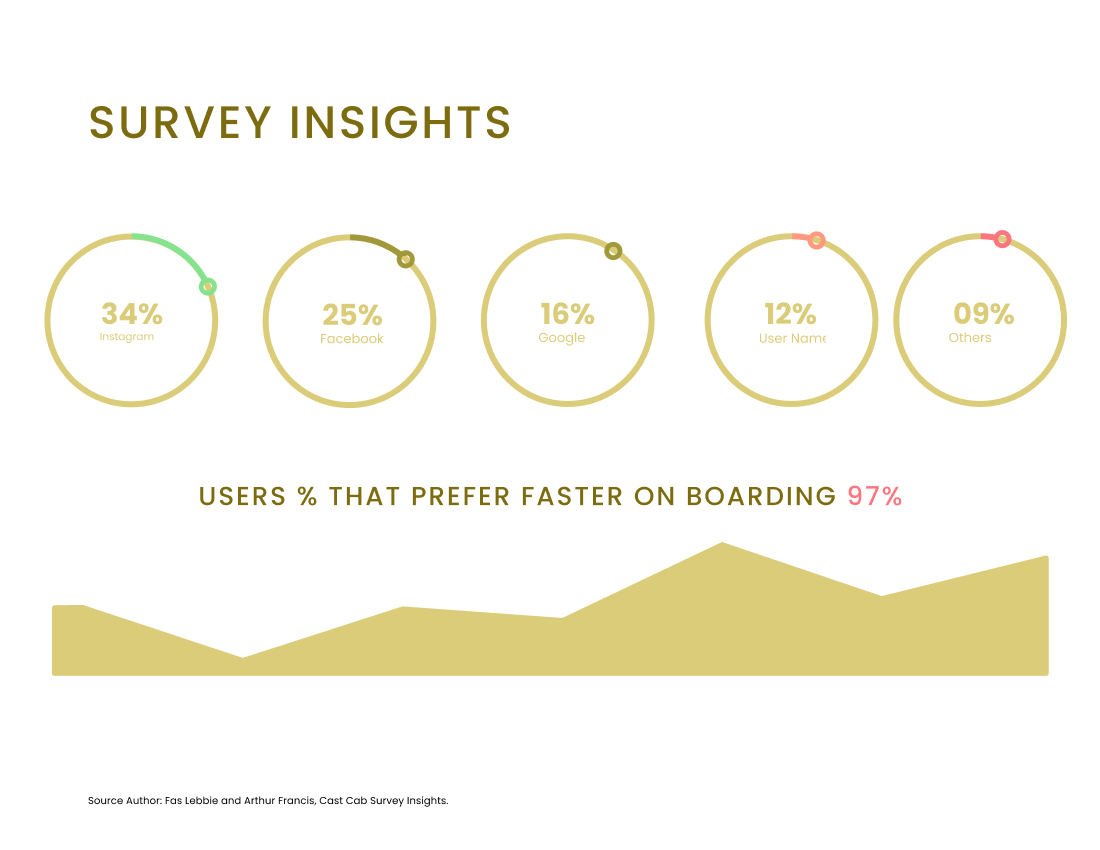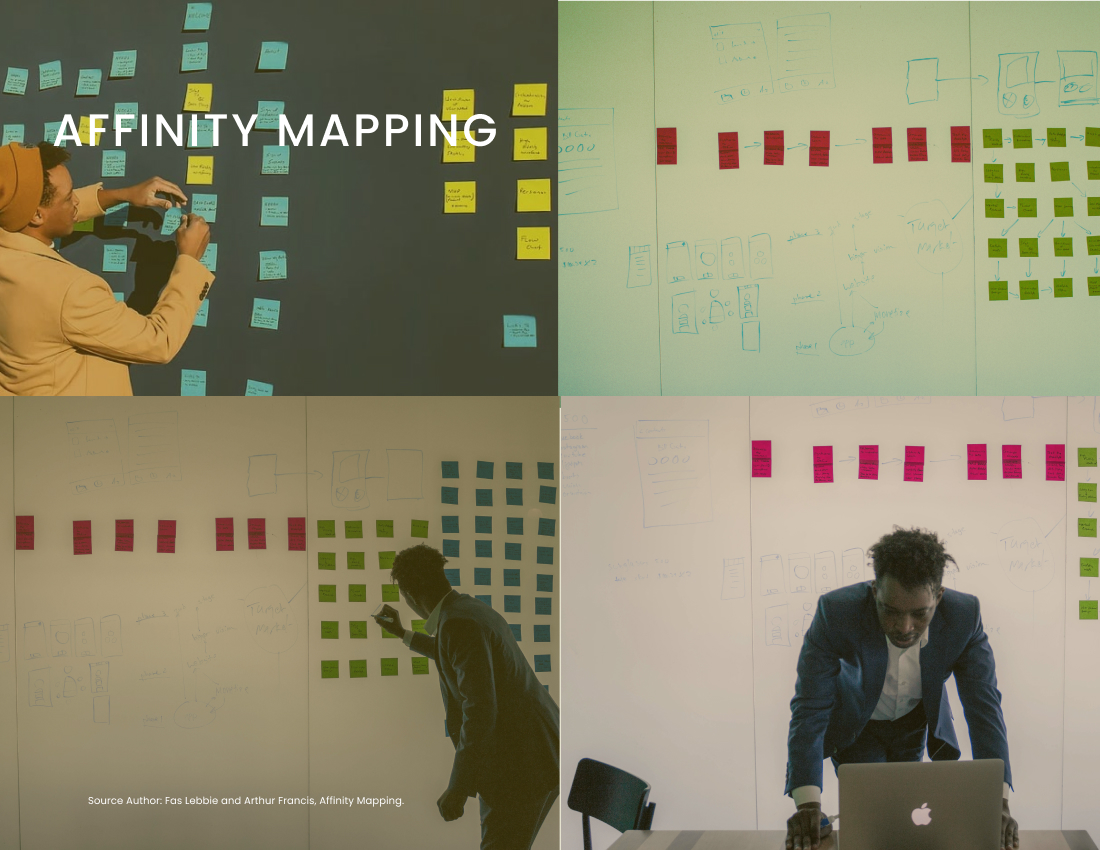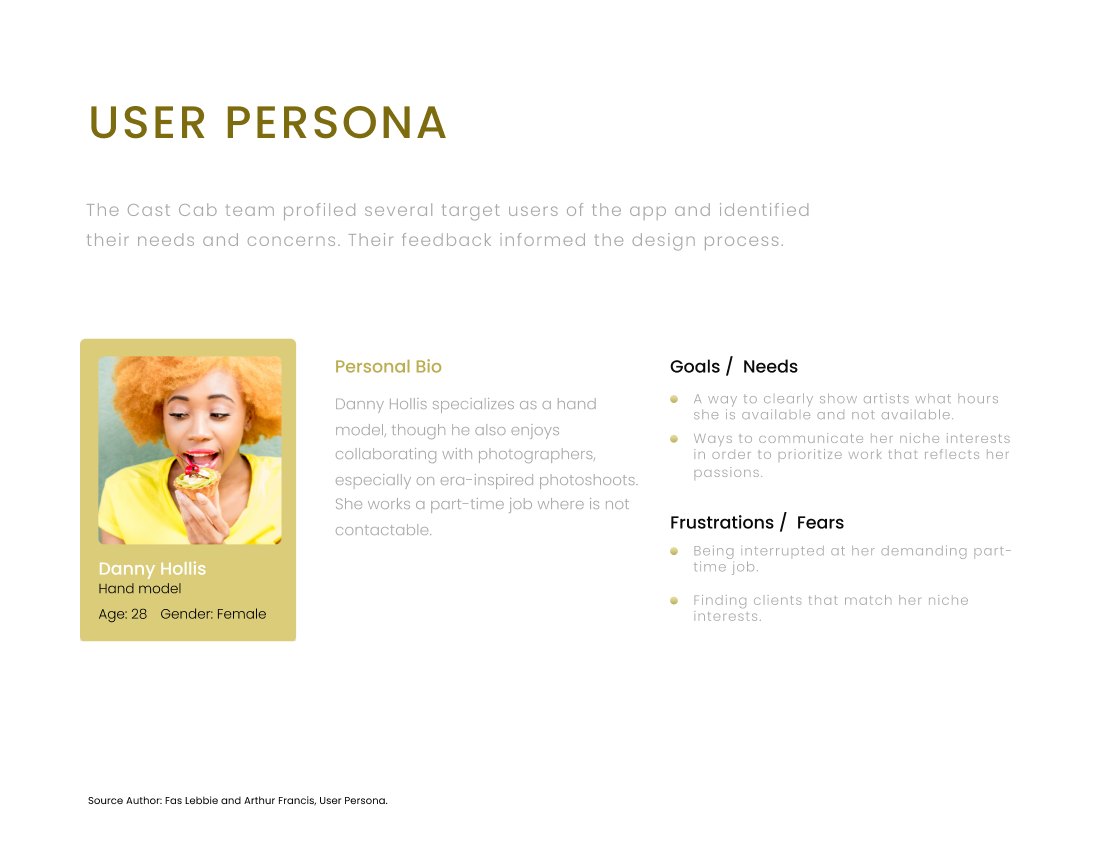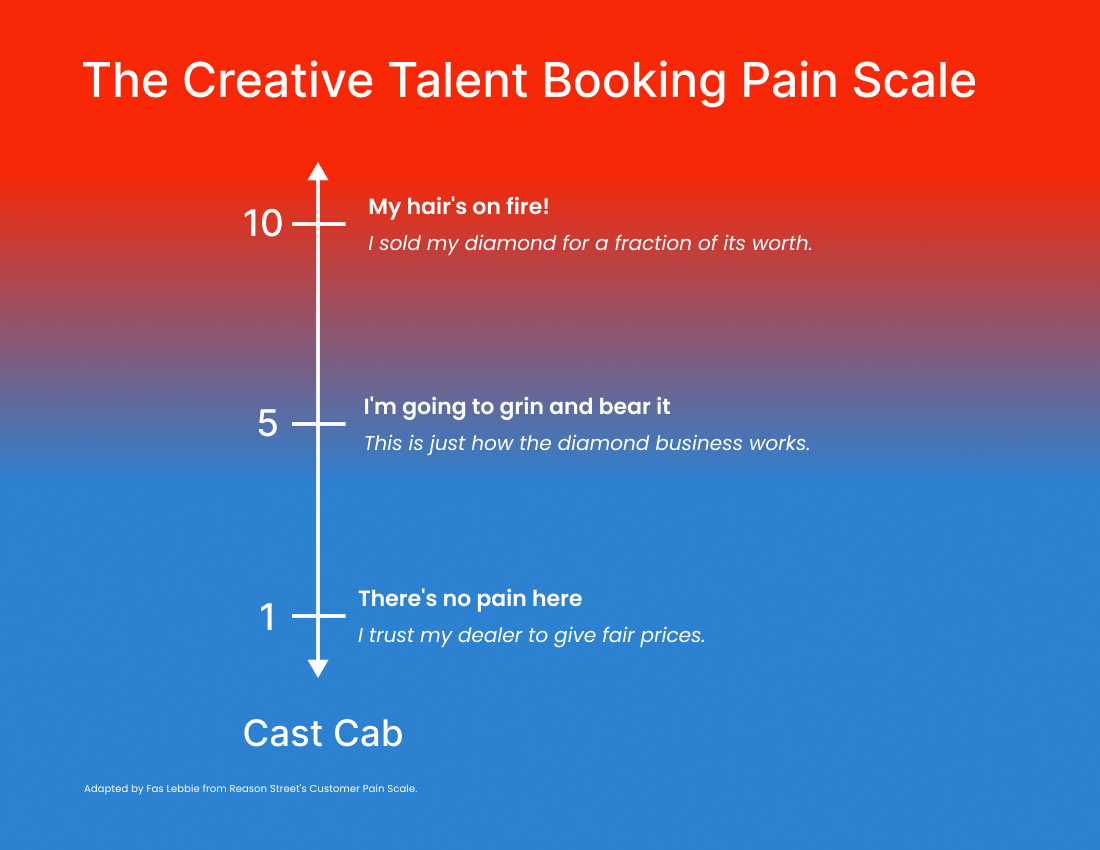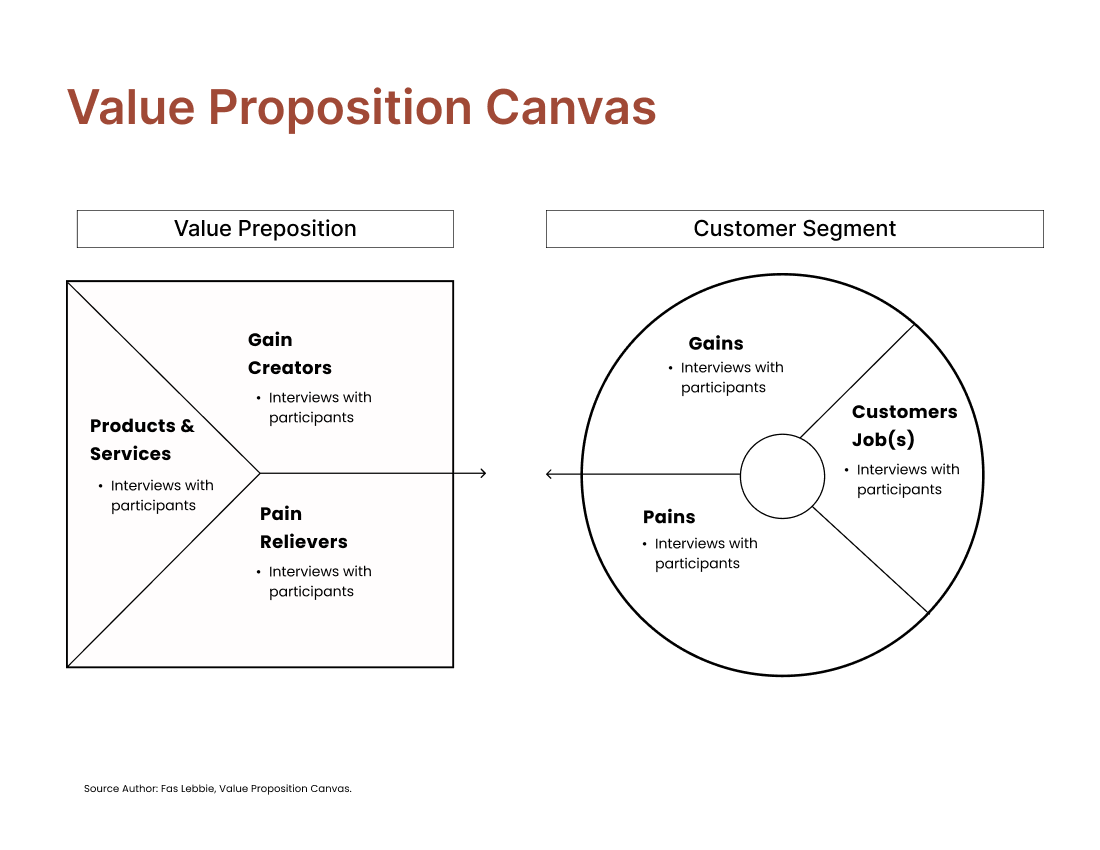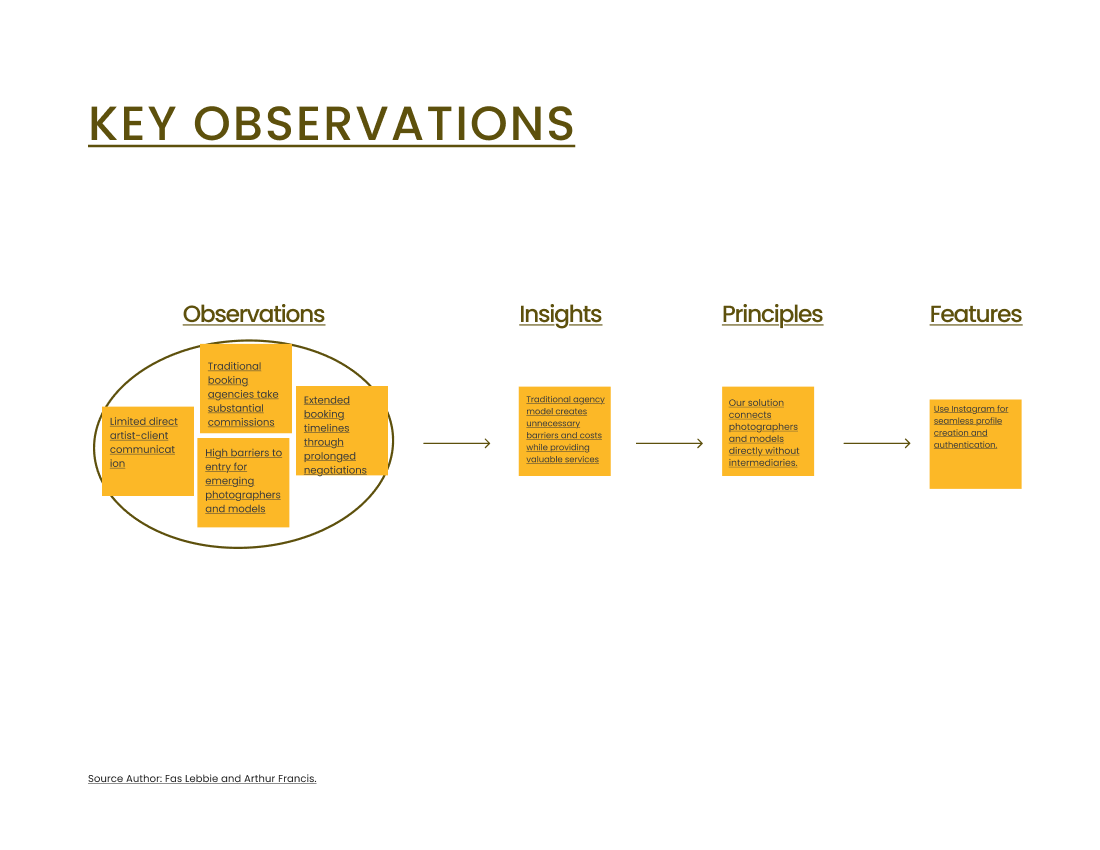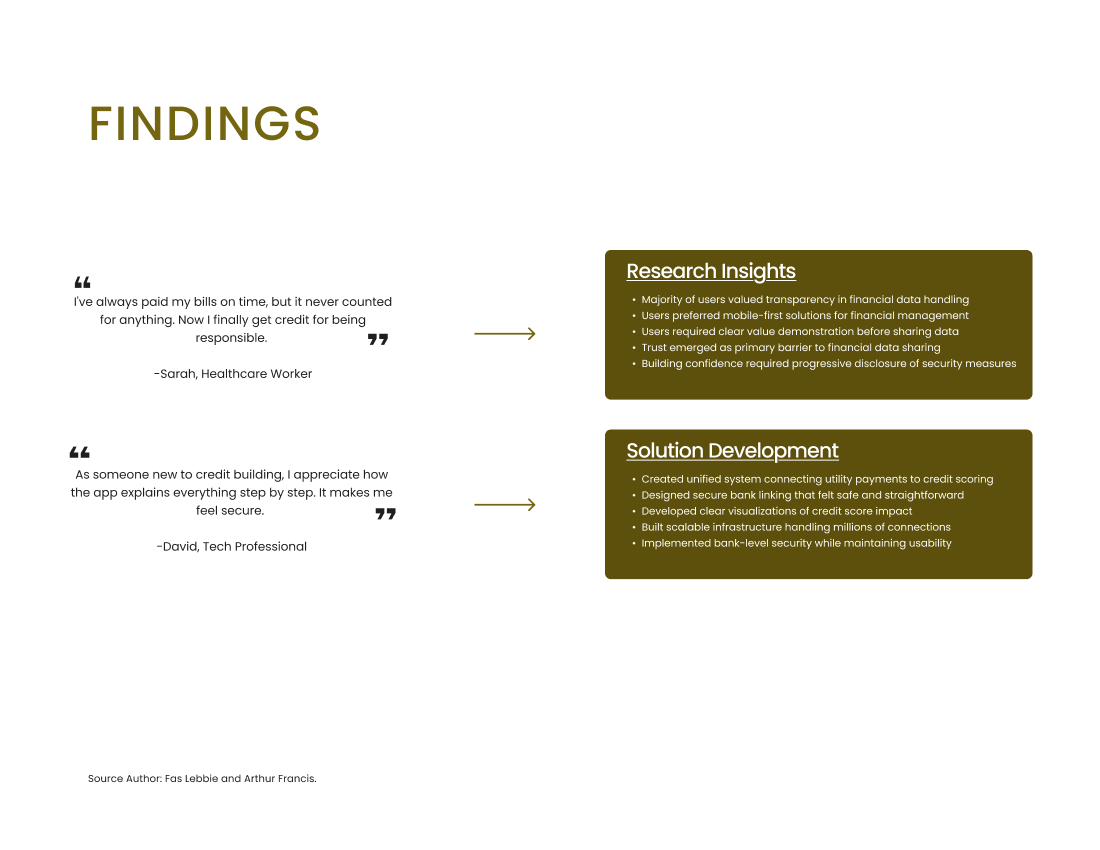Problem Context
The creative talent industry has historically operated through a system disadvantaging both talent and clients. While providing valuable services, traditional booking agencies create significant barriers as intermediaries. They typically take substantial commissions, extend booking timelines through prolonged negotiations, and limit direct artist-client communication. This system creates a barrier to entry for emerging photographers and models, as agency representation remains inaccessible to many talented individuals. Alternative approaches like direct messaging on social media platforms present their own challenges, introducing risks without formal agreements or payment protection. This creates a market gap where independent creative professionals need a solution offering the security and structure of agency booking without the associated costs and inefficiencies. The rise of social media has fundamentally changed how creative professionals showcase their work, with platforms like Instagram becoming de facto portfolios. Despite this evolution in self-presentation, the booking process had not kept pace with these changes. This disconnect between modern portfolio presentation and outdated booking processes represented an opportunity to create a more integrated, efficient system leveraging existing digital behaviors and expectations.
